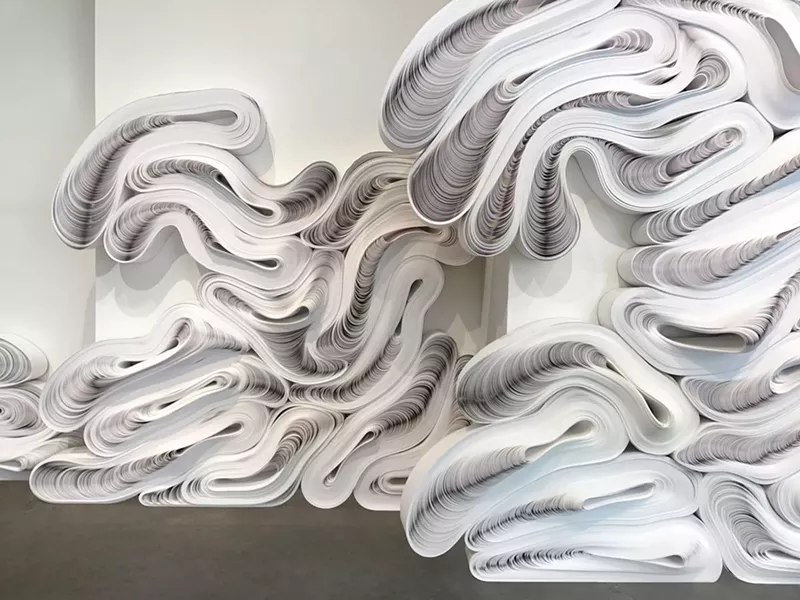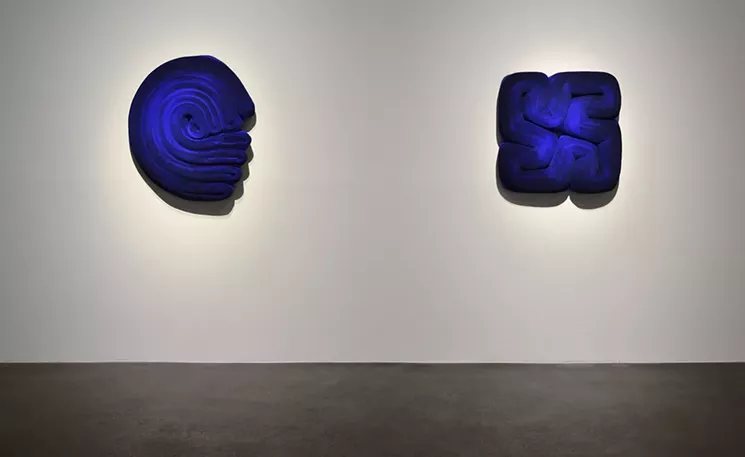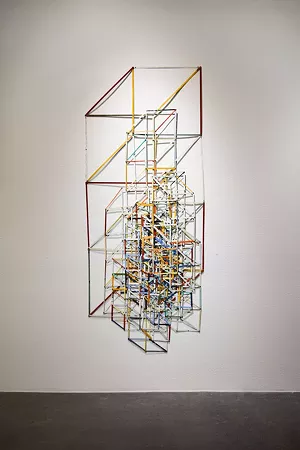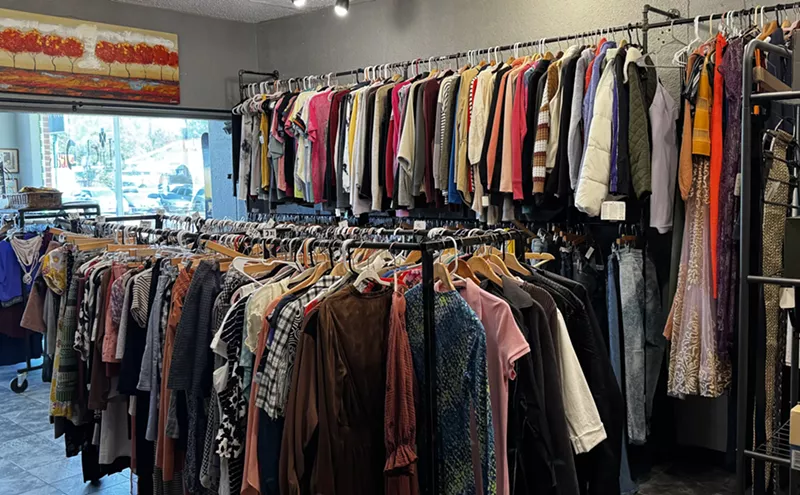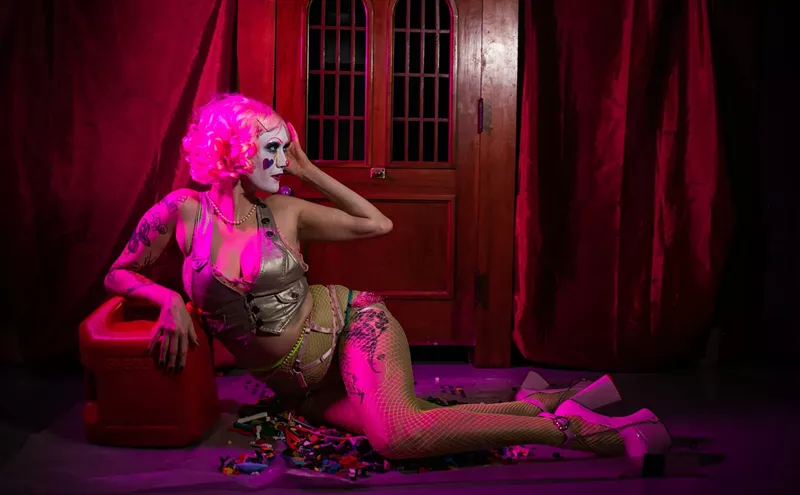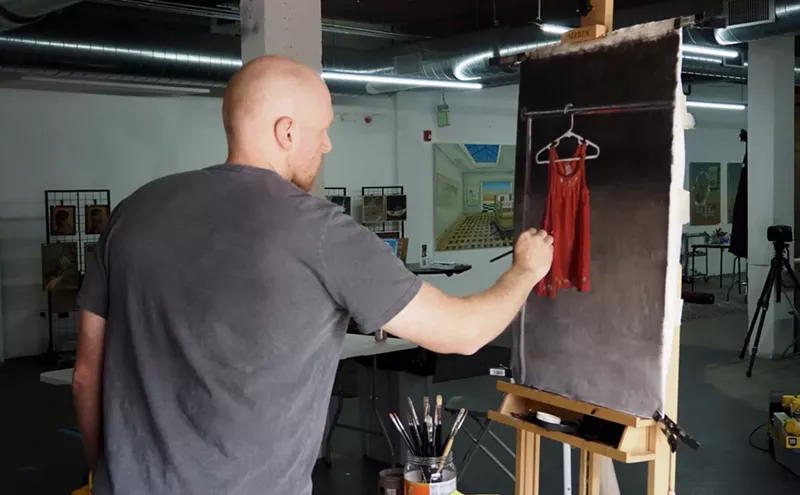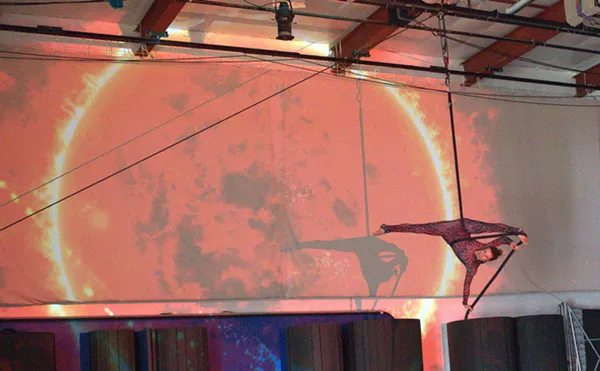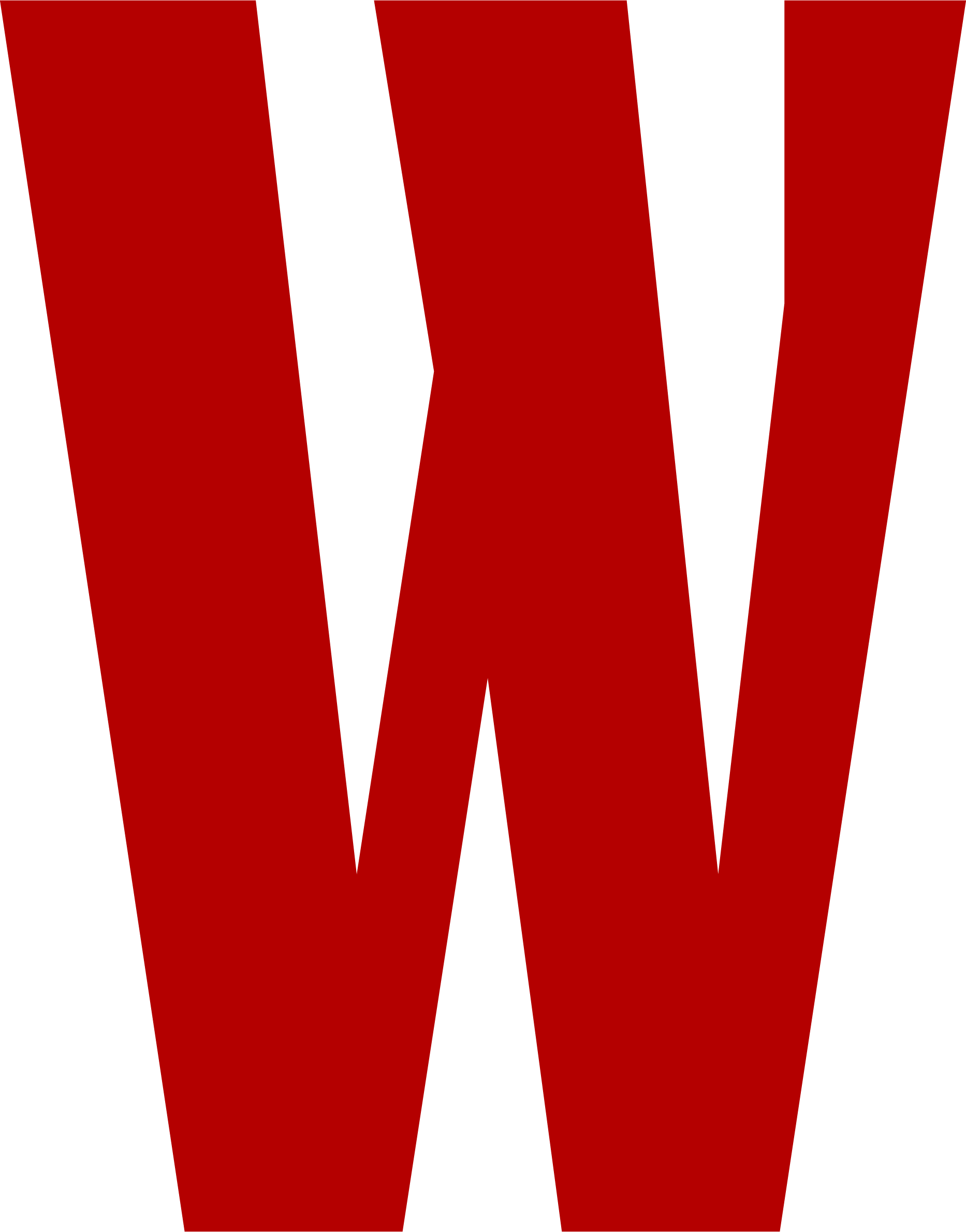In the entry space, Jae Ko: Flow showcases the unusual paper works of Jae Ko, an internationally known Korean-American artist who’s exhibited her conceptual abstractions in this country since the late 1990s. Although Ko also does “drawings” with vinyl cords, her signature creations are those made from distorted and sometimes dyed rolls of repurposed adding-machine tapes. Though a few of the wall pieces here are luxuriously colored — for these, Ko soaked the paper rolls in a deep-blue dye, then shaped them while they were soft into simple geometries — the anchor is the enormous “Flow,” a site-specific installation that has a landscape quality.
“Flow” is also made out of paper rolls, but instead of being soaked and dyed, the paper in the rolls has simply been pulled out into loose curves. The result is an impressive heap of looping forms and voids climbing the wall; the loops are similar yet different, their specific form determined by the force of gravity acting on the heavy stacks of paper. Ko has written that when she works with the rolls of paper and taps them, “they just collapse, then fold into amazing shapes.”
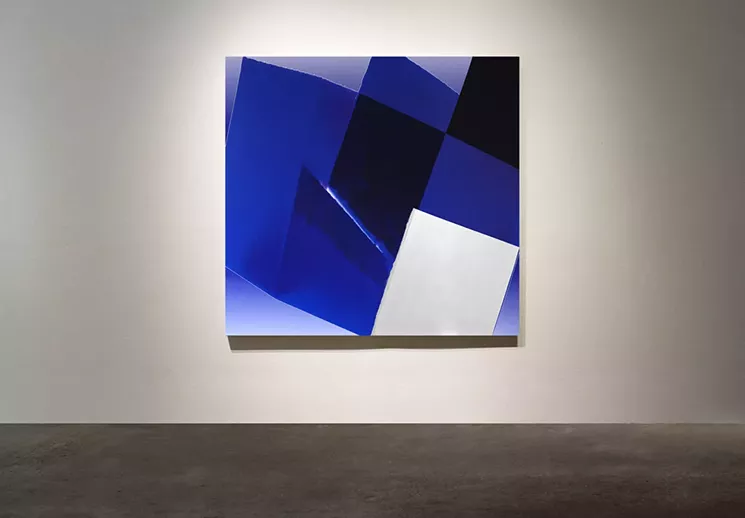
"Unsayable Lights," by Kate Petley, acrylic and archival ink on canvas.
Courtesy of Robischon Gallery
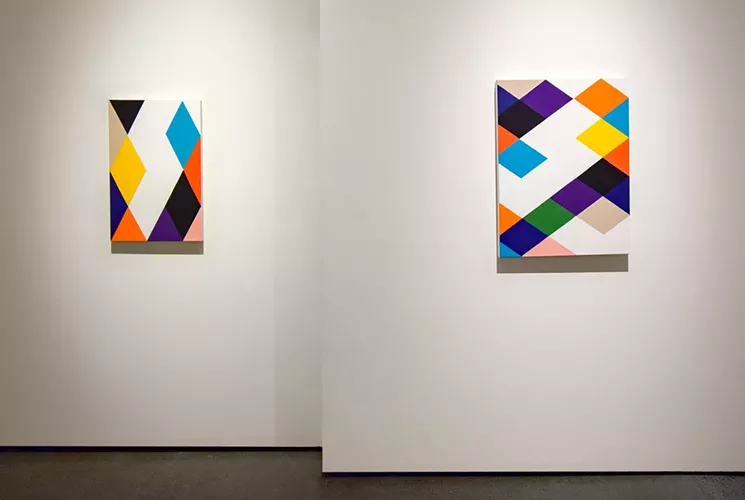
"Del Parto" and "Arabesque," by Stephen Westfall, oil and alkyd on canvas.
Courtesy of Robischon Gallery
A number of the Larsens are small, wall-hung sculptures made of vertically and horizontally mounted metal bars that form an organized tangle of components surrounding open spaces. For “Player Coach,” a horizontally oriented construction mounted onto a back panel is used to suspend a roughly cubic shape that hangs off the front. The colors of the scuffed-up paint on the found metal give the piece a quiet palette of sun-faded orange and yellow, with dirty white the predominant tone. The way that “Player Coach,” as well as other Larsen works, strikes a balance between the simplicity of the metal strips and the complexity of the ultimate compositions is very successful, as is the juxtaposition of the underlying geometric forms with their rough approximations through the pointedly crude construction and gritty found surfaces. There are more than a dozen of these pieces, allowing us to see Larsen’s small sculptures in depth, and each one is sensational.
Among the handful of larger Larsen works is the impressive “Half Naked.” Larsen has built a complicated skeletal form that changes scale as it rises. Perched on a perfectly executed plywood plinth are large, stepped outlines of rectangular shapes, followed by constructions made of smaller elements that get tighter and tighter. The ins and outs of the linear composition seem to metastasize off one side, lending the piece a precarious profile. More stable in appearance is a large wall piece, “Daily Special,” that looks like flattened three-dimensional solids.
The Robischon finale, Derrick Velasquez: Constant Denial, is something of an extension of the artist’s current show at the Museum of Contemporary Art Denver that runs through August 27. Unlike the MCA show, this one has two examples of Velasquez’s best-known type of work: a wall-mounted wooden spine over which lengths of vinyl have been laid, forming symmetrical compositions. The specific shape of each of these pieces is determined by gravity acting on the vinyl as it follows the contours of the central spine; Velasquez has stacked the lengths of vinyl so that different colors create simple compositions.
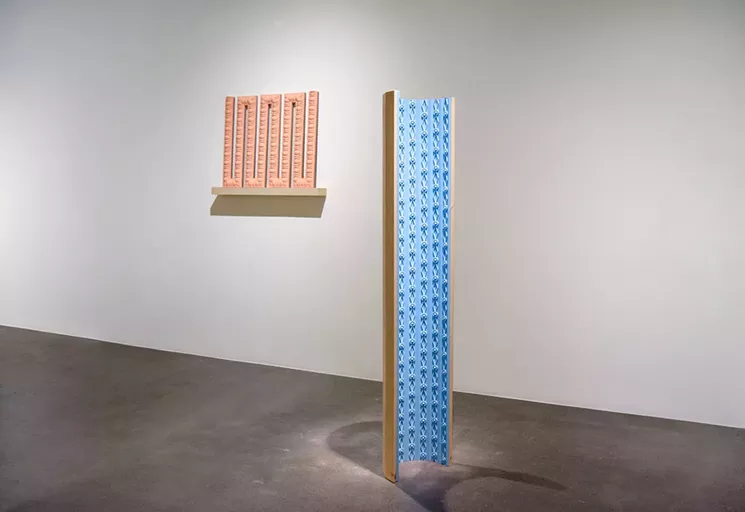
"Preservation of Monument: Ultimate Trace" (left) and "Preservation of Monument: Tall Field," by Derrick Velasquez.
Courtesy of Robischon Gallery
Although abstraction never really went away, these shows prove it’s back with a vengeance...and a conceptual edge.
Jae Ko, Radial, Ted Larsen and Derrick Velasquez through September 9, Robischon Gallery, 1740 Wazee Street, 303-298-7788, robischongallery.com.

